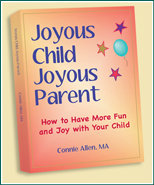In my workshops and coaching, I often see parents and educators
struggle to know the right way to handle a challenging situation.
They look at me and ask, "What’s the right thing to do?"
Every parent and educator knows this question, and we often turn to
others or to books to learn the right thing. We think there is a
right answer, and we feel compelled to find it so we can do the
right thing.
What if I were to tell you there is no right way. The "right way"
does not exist. The "right way" is only what’s right for that
person in that situation and with that child and cannot be applied
to everyone.
Most of us were raised to believe there is a right answer to every
question. We learned this from our parents and from our teachers.
Our goal as children and students was to learn the right answer,
which our "experts", our parents and teachers, already knew. We
strove to please the important adults in our life.
There was great benefit for us in knowing the right answers. We
received smiles from Mom and Dad, better grades, special treats,
positive recognition and attention. There was also a price for not
getting the right answer: punishment, loss of toys and privileges,
being sent to our room, withdrawal of love and positive attention.
As young people, we learned our lessons well and unknowingly came
to believe in the Right-Answer Fairy. Belief in the Right-Answer
Fairy has left us searching for the right answers from others and
searching with our minds and intellect. Too often we ignore the
messages of our heart and our natural inner knowing. We also ignore
the messages from our children.
Most people agree on what we want for children-happiness,
self-confidence, cooperation, and loving connection with others.
What we don’t agree on is how to create these qualities in
children. Yet it’s the "how" that makes all the difference. Two
people who agree on what they want to create can disagree
dramatically on how to make it happen.
One person believes spanking is the right way to get a child to
cooperate. Another believes the answer lies in explaining "why" the
child needs to cooperate. Still another believes kindly teaching
will get a child to cooperate. Others believe in charts, taking
toys away or giving the child a reward when he succeeds.
How you define the "right way" depends on how you perceive children
and what they need from us. Parents and educators often believe the
answer lies in managing and training a child’s behavior. What I’ve
found is when you focus on nurturing a child’s emotional and
spiritual wholeness, you empower your child’s internal knowing,
which guides him to naturally be more cooperative and loving.
Finding the "right way" is a complex answer, which depends on who
you are, your child’s unique core essence, and everyone’s needs and
desires in the moment. The "right way" can change from moment to
moment. It is not a static answer.
Searching for the "right answer" is like going on a Snipe Hunt or
hoping to catch a glimpse of the Right Answer Fairy. It is a
pointless search. Instead, focus as neutrally as possible on the
situation, and become aware of what is happening emotionally with
you and your child.




















 Just a little bit about me -- I'm a coach for parents, visionary guide, insightful trainer, and powerful consultant.
Just a little bit about me -- I'm a coach for parents, visionary guide, insightful trainer, and powerful consultant.